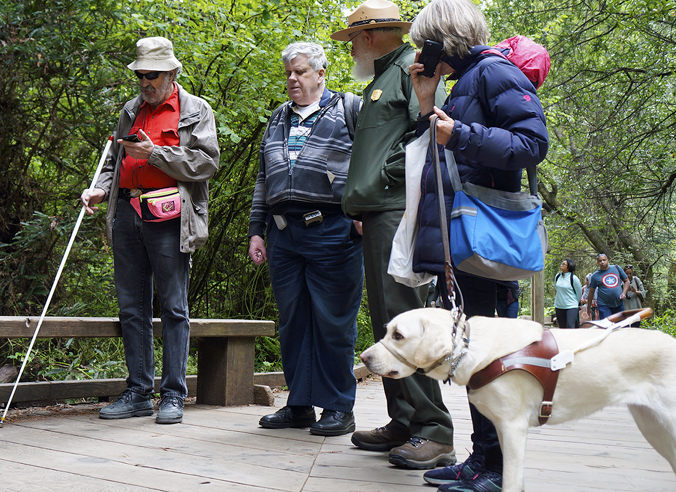
A research team from the UniDescription project, which aims to create digital audio spaces and more accessible places, recently conducted another major field study of in-situ audio description at Muir Woods National Monument in California, near San Francisco.
The team, under the direction of principal investigator Brett Oppegaard of the School of Communications in the UH Mānoa College of Social Sciences, tested the new audio description of Muir Wood’s park brochure featured in the free and open-source UniD app. The app is designed to make brochures at national parks accessible to those who have trouble seeing them. Audio description is the translation of visual media, such as photographs and maps, into acoustic media in an effort to allow the ear to hear what the eye might not be able to see.
With coordination support from the team’s research partners at Muir Woods and the American Council of the Blind, the study included participation by nine members of the Silicon Valley Council of the Blind and seven members from the San Francisco Chapter (16 total participants who are blind or visually impaired, plus friends and family, and companion animals).
Co-Principal Investigator Thomas Conway, from the UH Center on Disability Studies, was on site to coordinate and observe the activities and to conduct the research, including field experiments with the UniD app and a focus group. The UniD app received high marks for ease of use and the quality of audio descriptions, including a consensus opinion that the audio descriptions were properly located, the correct length and added depth to the experience. This field research, including Conway’s participation in the event, was sponsored by Google and the American Council of the Blind as part of a larger grant project focused upon audio describing National Park Service sites throughout California. Last November, the team conducted a similar study of audio description at Yosemite National Park.
The UniD app is available for both iOs and Android smart phones and contains audio description of more than 50 National Park Service brochures so far, including those for Everglades National Park, Hawaiʻi Volcanoes National Park, the Statue of Liberty National Monument, Yellowstone National Park and the Washington Monument.

